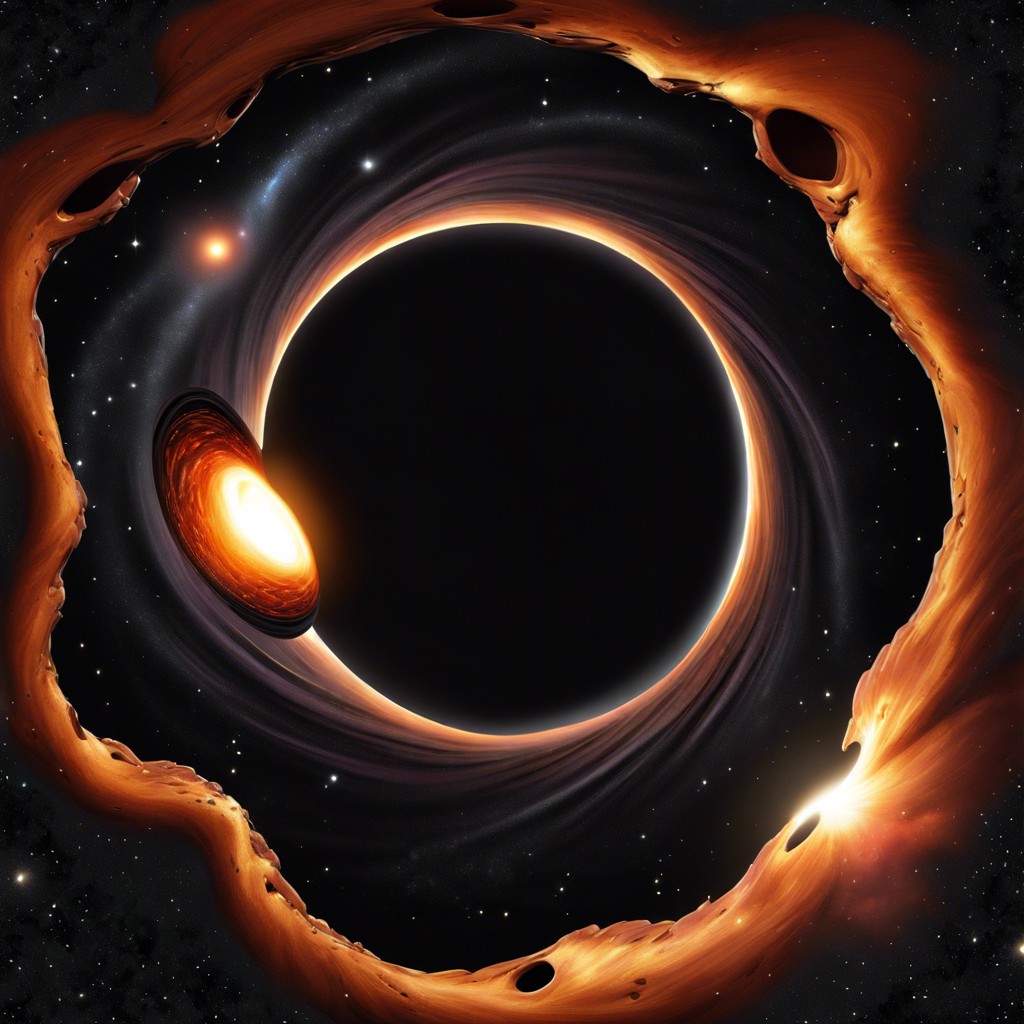Last updated on
Discover just how massive the black hole TON 618 is and what makes it one of the most fascinating objects in space.
Key takeaways:
- TON 618 is 66 billion times the mass of the Sun, massive!
- In a quasar, TON 618 shines bright across the universe.
- TON 618 dwarfs Sagittarius A* and M87* in size.
- TON 618 challenges black hole formation theories.
- Cosmologists are intrigued by TON 618’s mind-boggling size.
Overview of TON 618

Imagine, if you will, a beast so gigantic that it makes Mount Everest look like a molehill. That’s TON 618. This cosmic colossus is a supermassive black hole – think of it as the Godzilla of spacetime.
First, here’s the mind-blowing part: it’s estimated to be 66 billion times the mass of our Sun. Yes, billion. You could fit an entire galaxy’s worth of stars and still have room left for dessert.
Now, TON 618 isn’t just lounging about in space; it’s part of a quasar, a celestial light show fueled by the black hole’s insatiable appetite for gas and stars. Picture it as a cosmic vacuum cleaner, sucking up everything with a dazzling display of energy that can be seen across the universe. It’s so bright it sends light zipping through space at such intensity, astronomers have spotted it from billions of light-years away.
In galactic scale, TON 618 essentially rules its neighborhood. So, next time you think your pile of laundry is overwhelming, just remember there’s a black hole out there devouring stars like cosmic candy.
Comparison to Other Supermassive Black Holes
Let’s start with Sagittarius A*, our neighborhood behemoth at the center of the Milky Way. It tips the scales at around 4 million solar masses. Quite the heavyweight champ, right?
Now, meet M87*, the black hole made famous by that fuzzy donut picture. M87* dwarfs Sagittarius A* with a whopping 6.5 billion solar masses. That’s roughly 1,625 times beefier than Sagittarius A*. Impressive, huh?
Then enters TON 618, puffing up its astronomical chest. Weighing in at 66 billion solar masses, it absolutely humiliates M87*. Picture M87* as a sumo wrestler and TON 618 as, well, a sumo wrestler eating other sumo wrestlers.
TON 618 isn’t just big; it’s brain-meltingly colossal. If black holes were celebrities, TON 618 would be the rockstar with a world record and an entourage of scientists.
Implications for Our Understanding of the Cosmos
With TON 618’s sheer immensity, the universe suddenly seems like that guest room you swore didn’t need tidying: far more complex than it appears.
First, it challenges our understanding of black hole formation and growth. If this beast can grow so colossal, what other cosmic giants might be lurking out there, hiding behind a particularly thick curtain of interstellar dust?
Second, it nudges astronomers to re-think the life cycles of galaxies. Just as a town needs a good mayor to thrive, galaxies form and evolve around these supermassive black holes. TON 618 may hint at more bustling galactic metropolises than previously thought.
Lastly, it keeps cosmologists on their toes, continually refining models of our universe’s expansion and matter distribution. Each new discovery is like adding another layer to the most extravagant intergalactic lasagna ever imagined.
The cosmos just got a whole lot more intriguing—and possibly a bit messier, but who doesn’t love a good mystery?



